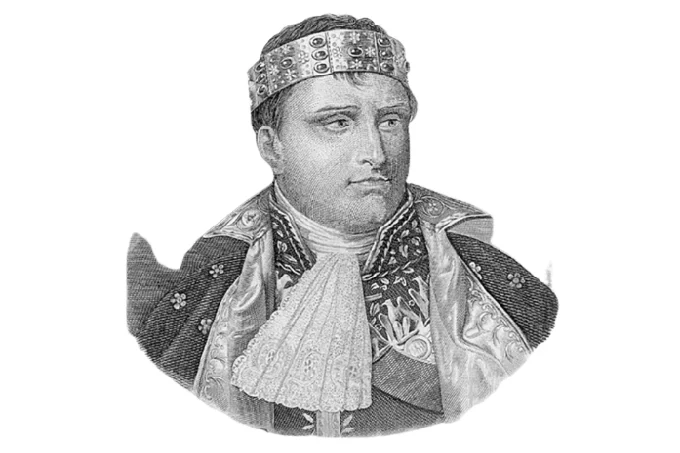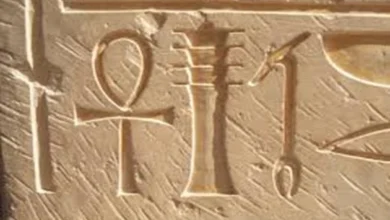The secret of the medieval Iron Crown which is not made of iron

An intriguing item known as the Royal Crown may be seen at the Cathedral of Monza in Monza, Italy. Although it is not really composed of iron, ever since the early Middle Ages, it has been often referred to as the Iron Crown.
The notion that the inner sheet that held the plates together was formed from this metal led to naming the material with this name. In reality, it’s made of silver. This Crown has been used to crown monarchs for hundreds of years, but until recently, very little was known about where it came from in the first place. In recent years, researchers have been successful in solving this intriguing puzzle from antiquity.
Golden Crown fashioned of wrought iron
The Crown is made up of a total of six plates. It is crafted from an alloy that contains 84 percent gold, and the remaining percentage is silver. Loops serve as the closure for the Crown (one of which is missing today). On each facet, there are two distinct sections: the first is bigger than the other and has a gem placed in the middle, encircled by four gold rosettes that each have seven petals. Enamels of various colors and patterns, many of which depict flowers, are used to embellish the corners of things.
The Crown has an uneven circular form with a diameter of just 15 centimeters on the inside and a circumference of 48 centimeters on the outside. The Crown is embellished with a total of 26 rosettes made of gold, seven sapphires, seven garnets, and four amethysts. The remaining components are made of simple colored glass. The plates have a height of 53 millimeters and are held together on the inside with silver foil that measures one centimeter in height and one millimeter in thickness.

Iron got its name from the sheet that was found within the Crown; thus, people started calling it that. For a very long time, people thought that it was constructed out of iron. Helen, the mother of Emperor Constantine, is said to have made a visit to the Holy Land in 324, and at that time, she came upon the actual cross that Jesus Christ was crucified on. This event is the subject of a legend.
On the cross, there were many nails. However, Elena did take the nails with her when she left the cross behind in Jerusalem. These items were used in the manufacturing of a bit for Constantine’s horse as well as this Crown. This, according to the mother, was designed to shield her kid from harm while he was fighting.
Historians unravel the mystery
During the Middle Ages, people had a deep faith that this narrative was based on real events. The belief continued for a considerable amount of time, right up until recent analyses showed what a significant error it was. It was discovered a reasonable amount of time ago that this does not consist of iron. Only via the use of contemporary research was it possible to establish a link between this relic and a component of Emperor Constantine’s helmet. Historians are of the opinion that the Crown, often referred to as the Iron Crown, is nothing more than a diadem that was attached to Constantine’s helmet.
In order to validate his claim to the throne of Italy, the Ostrogothic ruler Theodoric the Great made a demand to Constantinople for the once helmet, which represented a portion of the city’s sovereignty. The Byzantines were willing to comply, but Emperor Anastasius I kept the remainder of the helmet for himself and only delivered him the diadem (which was on display in St. Sophia Cathedral until the Crusaders took the city in 1204, when it disappeared). Theoderic wore the diadem as a crown, which the Ostrogoths eventually presented to the Lombards as a gift for their service. Charlemagne, who was crowned King of the Lombards at the time, made use of it because of this reason throughout the ceremony.
According to the estimates of several authorities, the Crown was made somewhere during the fourth and fifth centuries. Some of the components date to a later period, with the earliest ones coming from between 445 and 565 and the newest ones from between 690 and 975. All of these characteristics, taken together, point to the fact that the Crown has been subjected to several restoration efforts throughout the years.
Some researchers are even of the opinion that the original Crown had eight plates rather than its more commonly accepted six. The Constantinopolitans cut down their numbers in order to provide a barbarian ruler like Theodoric with a more manageable crown.
Some academics take issue with this view
Certain historians are of the belief that Charlemagne altered the Crown so that it might be used for the coronation of his son Pepin as King of Italy in the year 781. This theory is held by some historians. Following Pepin’s coronation, at least five other kings were crowned using the Crown: Otto III in 966, Conrad II in 1026, Conrad of Lorraine in 1093, Conrad III in 1128, and Frederick Barbarossa in 1155. However, the historian Bartolomeo Zucchi stated around the year 1600 that between the 9th and 17th centuries, at least 34 kings and queens decked their heads with this Crown.
People believed that in Milan Cathedral, on May 26, 1804, Napoleon Bonaparte received the Crown that made him King of Italy. He placed the Iron Crown onto his head while simultaneously uttering the following words: “God gave it to me, woe to those who take it away from me.”

Following the defeat of Napoleon and the establishment of the Lombard-Venetian Kingdom in 1815, the Crown became the symbol of the Lombard-Venetian King. After that, it went through a series of challenging events, including being sent to Vienna, Venice, and Turin. It was stored in Rome for a short time during the First World War, and then it was moved to the Vatican during the Second World War, where it stayed until the conclusion of that battle.
Both Victor Emmanuel III and Umberto II, the two most recent monarchs of Italy, disapproved of the tradition of coronation and chose not to participate in it throughout their reigns. The Iron Crown was first given to the Theodolinda Chapel inside the Cathedral of Monza by King Berengar I of Italy in the year 874. Today, the Iron Crown is maintained on the altar of the Theodolinda Chapel within the Cathedral of Monza.




